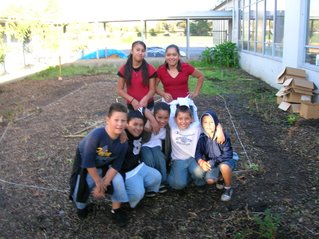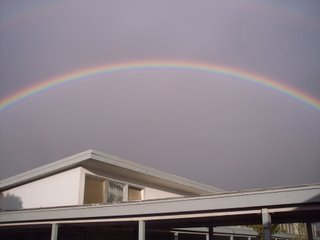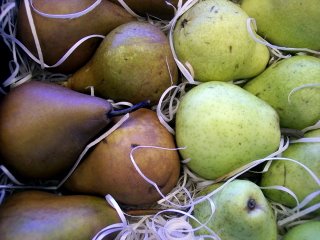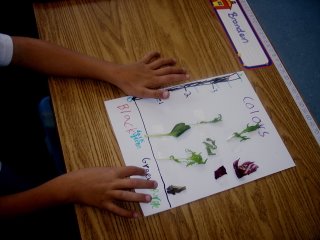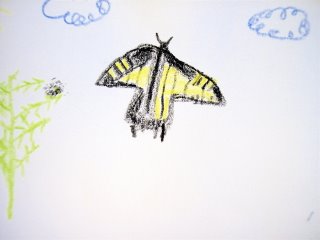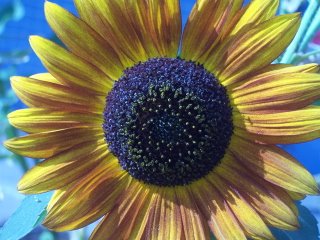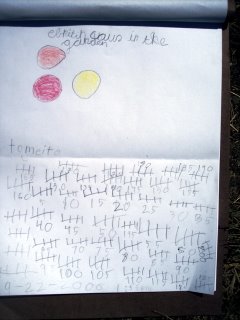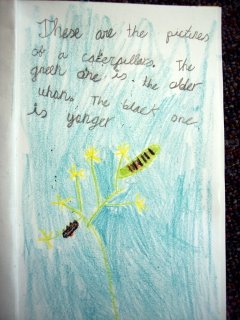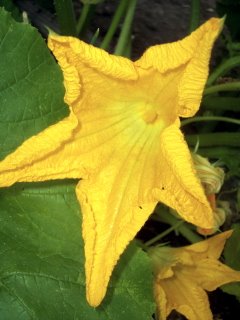
sábado, diciembre 23, 2006
viernes, noviembre 03, 2006
jueves, octubre 26, 2006
PRAYING MANTIS by Room 16 Students
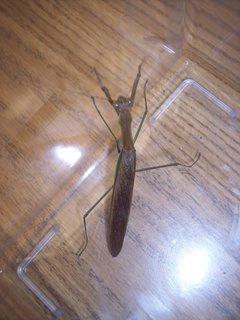
Ms. Young found this praying mantis outside her door. This praying mantis measures about 14 cm. A praying mantis is an insect. His color is green with purple stripes on his back. He has blue eyes. Insects have six legs, just like this praying mantis. The praying mantis lives in the garden with other insects like butterflies. He can climb and fly and walk. This praying mantis has a head, a thorax, an abdomen, legs and wings. We know a lot about this praying mantis but one thing we don't know is: What does he eat?
miércoles, octubre 11, 2006
Flowers: Graph & Graph Again
martes, octubre 03, 2006
HARDER SCHOOL GARDEN
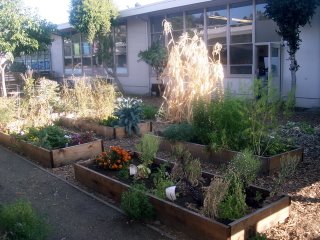
I went to the Math in the Garden training today at Harder School. I was very impressed by their garden. They have 6 8 x 4 planter boxes that look like they are very accessible to even the youngest students. Maybe we should think about creating this size planter box at Longwood so that everybody can enjoy learning in the garden.
lunes, octubre 02, 2006
CENTIMETER BY CENTIMETER - RUBRIC
I taught this lesson from the Math in the Garden book. I developed this simple rubric for third graders to self-assess their learning.
1. PICK A PLANT OR LEAF THAT IS LESS THAN 30 CM
2. UNDERSTAND THE UNIT OF MEASUREMENT
(MM VERSUS CM, CM VERSUS INCHES)
3. CORRECTLY MEASURE THE OBJECT
4. ILLUSTRATE THE MEASUREMENT
5. EXPLAIN WHAT YOU DID
1. PICK A PLANT OR LEAF THAT IS LESS THAN 30 CM
2. UNDERSTAND THE UNIT OF MEASUREMENT
(MM VERSUS CM, CM VERSUS INCHES)
3. CORRECTLY MEASURE THE OBJECT
4. ILLUSTRATE THE MEASUREMENT
5. EXPLAIN WHAT YOU DID
viernes, septiembre 29, 2006
jueves, septiembre 28, 2006
I COUNTED LEMON CUCUMBERS by MELISSA
lunes, septiembre 25, 2006
miércoles, septiembre 20, 2006
LAKEVIEW BLOOMS
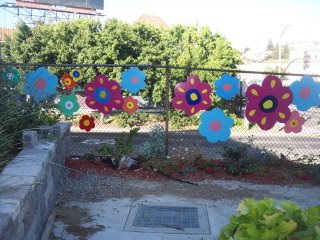
Lakeview School Garden had these wonderful "blooms" on the fencing around their garden. They were simple flower shapes cut out of thick cardboard and painted by the students using tempera paint. How can we make our school garden bloom with colorful art?
LONGWOOD TEACHERS PARTICIPATE IN GLC
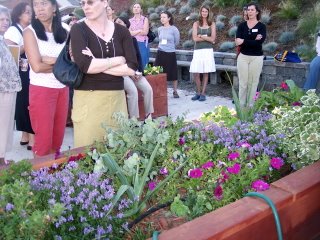
6 teachers from Longwood went to visit Lakeview School Garden in Oakland as part of the Growing Learning Communities program. We saw how beautiful their garden is. They have about 10 large planter boxes filled with flowering plants like geranium, salvia, and petunias. We did an activity in the garden. We learned how to gently shake the leaves of a plant onto a cardboard tray to trap insects that we could examine. I found two spiders, a ladybug, a leafhopper, ants, inch worm larva, and aphids.
martes, septiembre 19, 2006
Shapes in the Garden
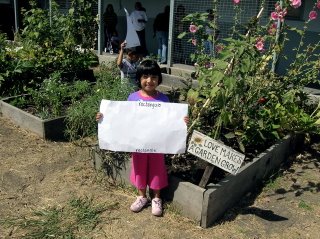
This was a great lesson. Identifying shapes is a standard found through-out the grade levels. As we know students have different learning styles and need many opportunities to solidify their learning of new material. This lesson was easy to prepare. I just cut up pieces of paper into circles, squares, triangles and rectangles. Then I had the students go into the garden looking for the shape they held. Once they found a shape they would hold the paper up to show they found the shape. The students had a great time and really demonstrated their knowledge of shapes.
DIARIO DE UNA CIENTIFICA
viernes, septiembre 15, 2006
SCIENTIST'S JOURNAL
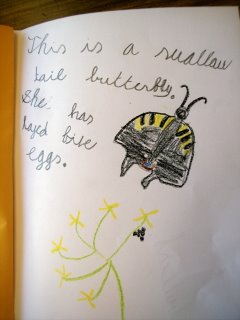
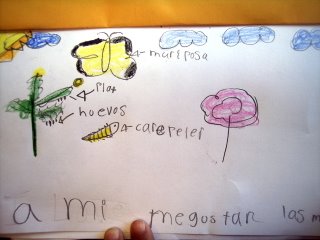

This colorful swallowtail butterfly has just laid her eggs on an anise plant. When the eggs hatch tiny caterpillars will start to eat the leaves of the plant. As they grow they will change color and be like the caterpillar Ms. Elizabeth found in the school garden today.
ENTYMOLOGY

Ms. Elizabeth found this caterpillar munching on the anise plant in the garden. It is going to be a swallowtail butterfly but right now it has to eat as much as it can to be ready for metamorphosis. You can follow the progress of this butterfly as it changes from a larva into an adult.
lunes, septiembre 11, 2006
WHAT PLANTS DO I EAT?
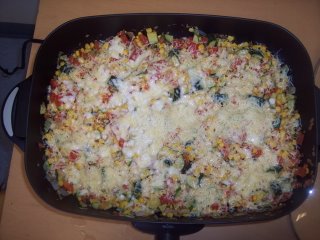
I made this recipe from the book "Carlos and the Squash Plant" by Jan Romero Stevens in class today with the students.
We started by brainstorming all the plants that we eat. Then we took a look at the specific things we were going to cook for the calabacitas. I let the students taste the raw zucchini and tomato. I had them smell the garlic and chile.
As I added each ingredient I made a list that the students copied in their List of Ingredients. When I was finished I reviewed the steps and wrote out the Instructions as the students told me what they remembered.
domingo, septiembre 10, 2006
jueves, septiembre 07, 2006
MEASURING THE GARDEN HARVEST
martes, septiembre 05, 2006
BIODIVERSITY

This big moth was resting on the shaded wall at the edge of the garden. It measured about 10 cm. I was surprised at how big it was. Because it was resting its wings were tucked in so I couldn't see how wide its wingspan was.
I remember when I started at Longwood we had so many different creatures in our garden that I rarely if ever see now. We had all kinds of butterflies. We had a tree frog. I netted a praying mantis once. Sometimes when I walked in the garden bird locusts would rise up in front of my foot. I even found a rare salamander hiding underneath the wood of the planter box one winter.
There is a greater diversity of creatures living or visiting our garden now. We have many kinds of birds, especially hummingbirds. We have lots of kinds of insects, crawling and flying. We have a family of mice and there are many holes and tunnels that suggest gophers.
We seem to have lost the tree frog and the bird locusts and the salamanders. I wonder how we can entice them back.
viernes, septiembre 01, 2006
HOW MANY SEEDS IN A TOMATO?
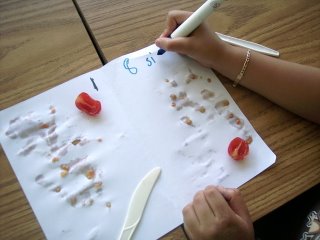
The students did this lesson from the Math in the Garden book today. We started by listing the different parts of a plant. Then I asked them to estimate how many seeds they thought were in a sample small tomato. Then we went for a walk through the garden. I picked out several fruits, cucumber, corn, bean, and tomato to show the students that a fruit is the part of the plant that has the seeds. I brought extra tomatoes so everyone could taste.
When we came back to the class I gave pairs of students two halves of a small tomato. They each had a plastic knife and a sheet of paper to put the seeds out on to count. I asked them to count the seeds in their half and add that number to their partner's half. Then I asked them to write the number of seeds on the sheet of paper.
Most of the students were able to separate the seeds from the pulp of the tomato. Very few of the students used the knife as a counting and grouping device. Only one pair made a tally of the seeds as they were counting even though I had explicitly taught that in a previous lesson. Only three pairs completed the activity by recording their data on the sheet of paper.
I think I will do this activity again but use a different fruit next time. I will explicitly model the estimating, the counting, the tallying, and the recording.
martes, agosto 29, 2006
PAJAROS DE LA COSECHA
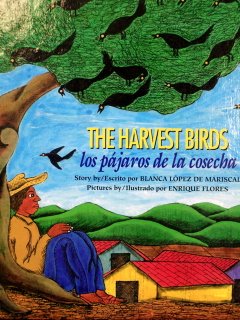
First day of school and already we have been to the garden. I took the students out for a walk through the garden to see all the different colors that are there. We had our clipboards and paper and pencil. Before we left the classroom I showed them how to make a tally of a number of things. We talked about the different colors of flowers we would likely see out there. Before we left the room I made sure we also talked about how to behave in the garden.
Out in the garden it was beautiful today. We sat for a little while to observe everything before I let them loose, counting every different color of flower that they could find. Before we came back to the classroom we sat and talked about why it is so important to protect the living plants in the garden. Finally, we walked around back to see Mr. French's plot.
Back in the classroom I read the bilingual story "Pájaros de la cosecha/The Harvest Birds by Blanca López de Mariscal. It is basically a "Three Sisters Garden" story about a man who doesn't have his own land and must rely upon the natural world to help him grow his food. I love this story because it really shows how much we can learn from Nature by opening our eyes and hearts.
domingo, agosto 27, 2006
SUNFLOWER SEEDS

Ms. Peabody sent me this picture of sunflowers she grew from seeds that a student saved. We have these same flowers growing in the Longwood Garden from seeds that are saved every year. I like the idea that we plant seeds every year and those seeds keep on producing beautiful flowers year after year. This is what we do as teachers - we plant seeds that grow and bloom, the students harvest the seeds for the next round of learning that they do for themselves. Our garden is our school, and vice versa.
sábado, agosto 26, 2006
THREE SISTERS GARDEN

I stopped by Longwood on the way back from Yosemite on Friday. I wanted to check out the garden to see what had grown since I was there last week. I noticed this purple corn that I remembered Mr. Santos planted with his class after the GLC people came to visit. I am going to miss Mr. Santos when he goes to his new school.
lunes, agosto 21, 2006
GARDEN STARS
domingo, agosto 20, 2006
FRUITS OF THE HARVEST
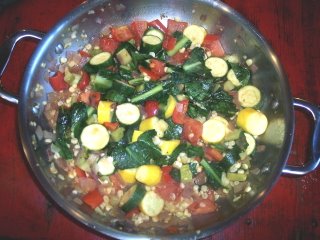
I made calabacitas with things I found in the garden last week. I sautéed purple onion and red bell pepper in olive oil, then added the zucchini, tomato, and corn. I seasoned with sea salt and fresh ground pepper then threw in some coarsely chopped basil. I added some chicken stock and at the very end threw in the chopped radicchio I found growing wild in our garden. I had no parmesan cheese so I crumbled some blue cheese into the dish before I served it. Whenever I make calabacitas I always think about Anita who had her own very special Mexican way of making this dish.
viernes, agosto 18, 2006
SUMMER GARDEN
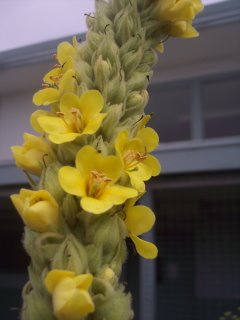
I went to visit the garden last week. I was very excited to see how much the garden had changed since we went on vacation in June. Boy was I surprised. The first thing that struck me was how tall the mullein had grown. Big thin spikes of yellow flowers were standing straight up on a rosette base. The spikes were about 2 metres high and the diameter of the base is about a meter across. I remember when I planted these flowers they were lost in a 3 inch pot!
Another flower that is doing very well is my pink hollyhock. Before school let out I cut back the main spike that had grown during the winter. In its place has sprung up about eight canes with delicate pink flowers marching up to the sky.
I am very pleased with how well Elizabeth has taken over the garden and turned it into a space that is central to our school community. It really does seem that as we grow our garden we are also growing a new school and I think we can really thank Elizabeth for helping us get this process started.
Suscribirse a:
Entradas (Atom)
